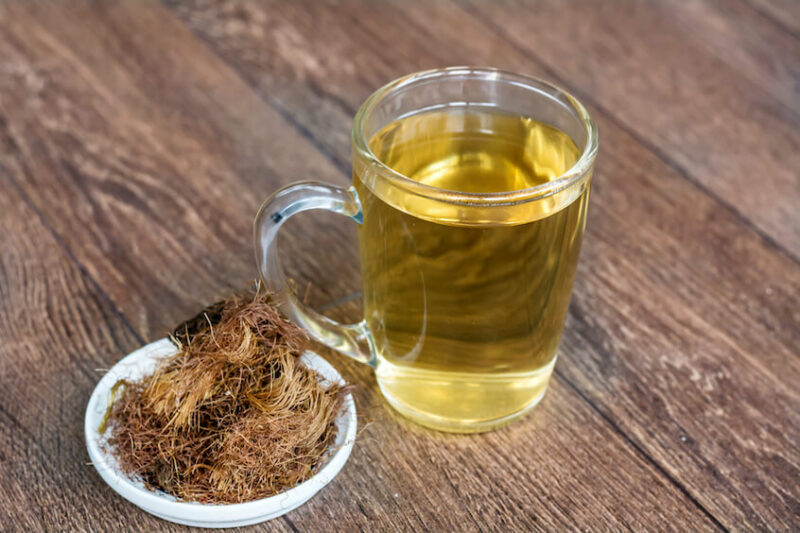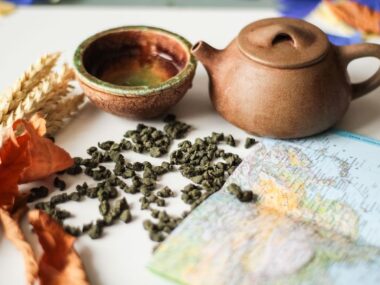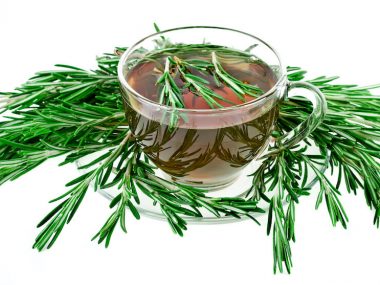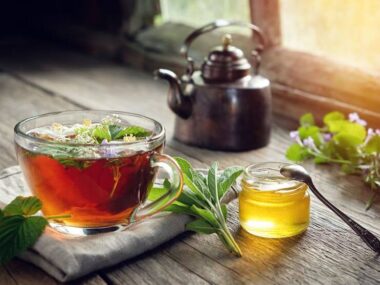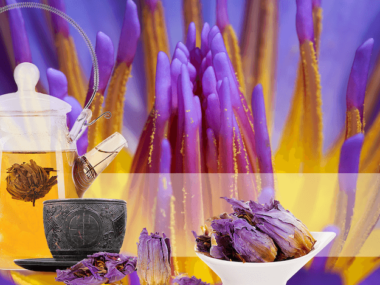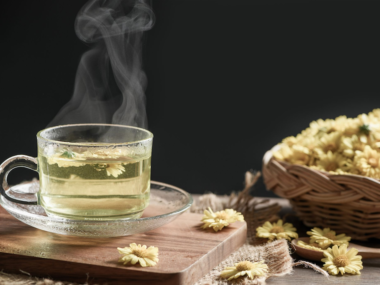You are going to be surprised when you find out what’s on the end of one of those annoying stringy hairs that surround ears of fresh corn. It just goes to show you that none of us are too old or too educated to learn something new. This time around, we’d like to introduce you to the magnificently delightful corn silk tea!
Table of Contents
What Is Corn Silk Tea?
Corn silk tea is a tisane (herbal tea) made from the silky hairs between the corn husk and ear of corn. Corn silk is believed to have numerous nutritional benefits. For that reason, it is prevalent in traditional medicine.
Most of us have probably never heard of such a tea as this, and when we do learn of its existence, we wonder how on earth can you make a tea with the scraggly hairs that most come to dread when cooking fresh ears of corn.
Yet, Missouri Botanical Garden’s plant profile for Zea mays (corn) includes the historical significance of corn. Archeologists discovered evidence of corn in Mexico that dates back to 5,000 B.C. Corn’s ancestry (Zea mexicana) dates as far back as 13,000 B.C. Corn has been a staple of almost every culture’s diets, especially indigenous tribes and those who live in the Mesoamerican region.
What Is Corn Silk?
Corn silk (Stigma maydis) is what’s referred to as “hairs” you see on a corn cob. Corn is produced by any of thousands of different species of corn plants belonging to the genus Zea mays. Surprisingly, corn belongs to the grass family.
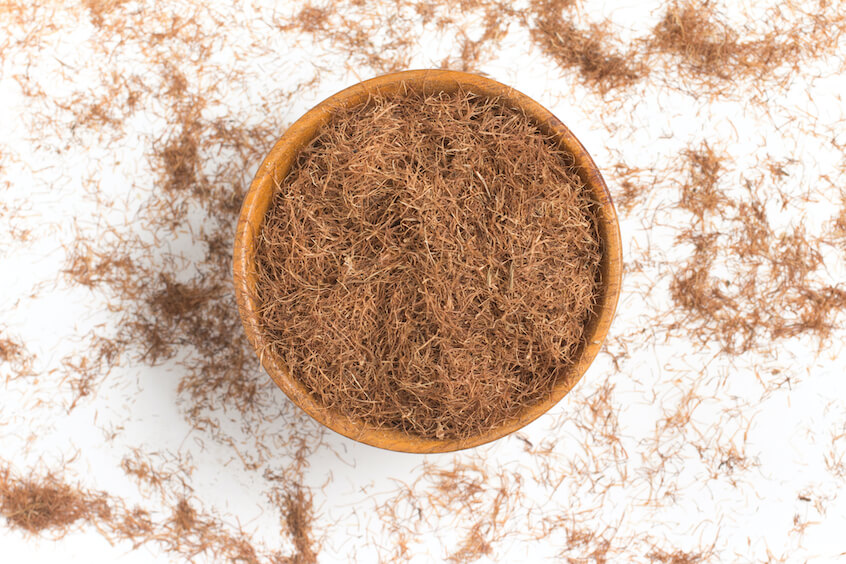
Every individual corn silk is a stigma. Stigmas are easily seen in flowers such as daffodils and tulips because they are located in the center of a flower and are bright yellow (because of pollen.) A stigma is the lifeline of a plant that collects and feeds pollen to the plant.
Many of our plants are dependent on pollen to develop and grow. This is why pollinators (bees, birds, butterflies, etc.) are essential. They carry pollen from one plant to another to cross-pollinate them and help them grow.
So let’s back up a few steps to see just how corn is pollinated. Every single corn silk hair is a stigma. At the base of each hair (stigma) is a receptacle (ovule.) Let’s say a bee comes along and lands on an ear of corn growing on a corn stalk.
Corn silk is between the husk (leaves) and the ear of corn. So, how does the bee get inside to pollinate the stigmas (corn silks?) Well, on the very end of a growing ear of corn is a tassel of hairs that grow beyond the husk leaves. The bee lands on the tassel and deposits pollen. The tassel, in turn, feeds the pollen down to the stigmas (corn silks.) The pollen continues to the receptacle (ovule) of each corn silk. The pollinated ovules are what grow into corn kernels. The next time you peel back the husks of ears of corn, notice how each of those corn silk hairs is attached to individual kernels.
Most people don’t know the correlation between the hairs and a cob of corn. Now, instead of becoming frustrated with all of those hairs when trying to clean fresh corn, we come to fully appreciate why they are there. The more hair on corn, the more kernels there will be.
How Corn Silk Is Made Into Tea
The corn silk is removed from the ear of the corn, and instead of discarding it, it is saved and allowed to dry. Once dry, it is cut into smaller slivers. Those who harvest corn silk to sell (herbalists, health food stores, etc.) package it as corn silk tea bags or as loose-leaf tea. When marketed, you almost always find that it’s listed as organic corn silk tea.
What Does Corn Silk Tea Taste Like?
Most will describe this tea’s overall taste as rather “shy” because of how mild it is. Although it may be a less vigorous tea, its subtleness is complemented with sweet undertones and slight hints of earthy.
How Much Caffeine Is In Corn Silk Tea?
Tisanes (herbal tea) such as this tea do not contain caffeine unless it has a blend of true tea (black, green, oolong, yellow, or white.) True teas are the only caffeinated forms of tea. If by chance, you combine corn silk and a true tea, you can expect to have up to 50 mg of caffeine (from the true tea) in a six-ounce cup of tea.
Are There Any Side Effects Of Corn Silk?
We could not find any supporting evidence on corn silk tea side effects, adverse reactions, or drug interactions.
The majority of research studies reflect findings of testing done on Wistar rats but no mention of human testing. One study (Toxicological Evaluations of Stigma maydis (corn silk) Aqueous Extract on Hematological and Lipid Parameters in Wistar rats) notes corn silk as being “relatively safe” when consumed within the investigated doses (100, 200, 400 mg/kg body weight.)
What Is Corn Silk Tea Good For?
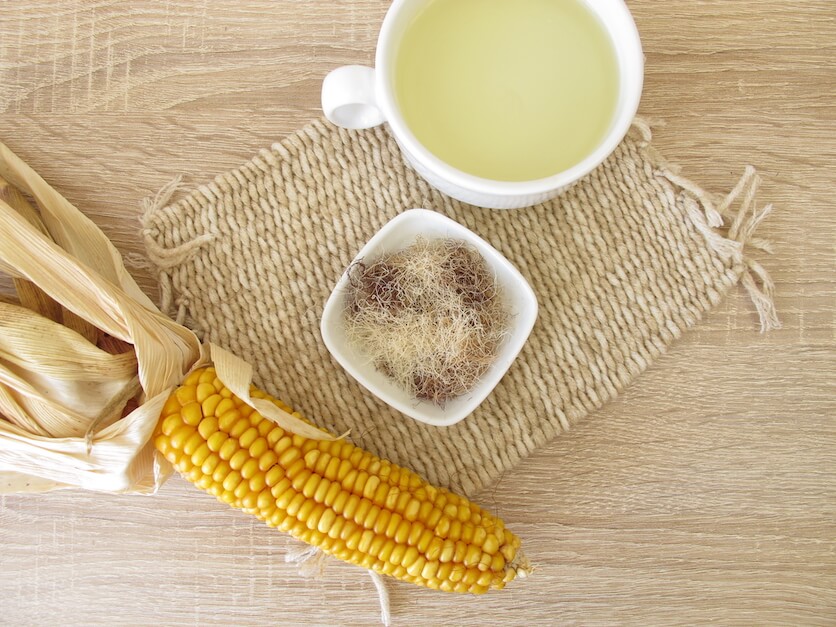
Corn silk tea benefits are aplenty as different studies indicate.
A pharmacological study (Corn Silk (Stigma maydis) in Healthcare: A Phytochemical and Pharmacological Review) concluded that corn silk exerts bioactivity as a diuretic, antioxidant, anti-fatigue, and antidepressant and also works to reduce high blood sugar. Their study goes on to state that although more research is warranted, human consumption of corn silk is safe.
Is Corn Silk Good For Skin?
The benefits of corn silk tea certainly seem to have merit. Corn silk has also been found to be very effective in helping those with hyperpigmentation of the skin. A research report (Inhibitory Effect of Corn Silk on Skin Pigmentation) clearly states corn silk as having “high potential” as a skin-whitening agent.
How To Make Corn Silk Tea
To make corn silk tea, we must first find some fresh ears of corn. If you happen to live near a crop farm growing corn, you are in luck! Perhaps you can either get permission or pay the farmer to pick a few ears of corn. No worries if that crop field isn’t an option because the next best thing is to purchase your corn from a farmers market or grocery store (husks on.)
Unadulterated Corn Silk Tea Recipe
The ratio of corn silk to a cup of tea is easy to remember. One cup of tea requires the corn silk of 1 ear of corn. You can make your tea with either dried corn silk or fresh. When it comes to flavor, fresh is always best.
Ingredients
- 2 cups of water
- Fresh corn silk from 2 ears of corn
Directions
- Remove the husks from the ears of corn.
- Separate the corn silk from the husk and corn.
- Discard the husk.
- Bring the water to a boil.
- Remove from the heat.
- Drop the corn silk into the hot water.
- Cover and allow to steep for 10 minutes.
- Remove the cover.
- Strain and discard the corn silk.
- Pour the tea into a teacup and enjoy.
Savory Corn Silk Genmaicha Tea Recipe
This tea is perfect for those afternoons when your stomach starts to growl.
Ingredients
- 2 cups of water
- Fresh corn silk from 2 ears of corn
- 2 teaspoons of loose leaf genmaicha tea
- 1 pinch of fresh ground black pepper
Directions
- Remove the husks from the ears of corn.
- Separate the corn silk from the husk and corn.
- Discard the husk.
- Bring the water to a boil.
- Remove from the heat.
- Drop the corn silk into the hot water.
- Place the loose leaf genmaicha tea into an infuser and drop it into the hot water.
- Cover and allow to steep for 5-7 minutes.
- Remove the cover and tea infuser.
- Strain and discard the corn silk.
- Pour the tea into a teacup.
- Add the pinch of black tea and enjoy!
Tip: Liven your tea up a bit by adding a tiny bit of butter (about the size of a pencil eraser) to the tea for a mild “popcorn-ish” tasting tea!
Crazy “Corny” Goodness
It appears as if corn silk tea is a keeper as far as a tisane (herbal tea) goes. So, next time you prepare fresh ears of corn for dinner, don’t toss out those pesky “hairs” because you have the makings for a super cup of tea.
